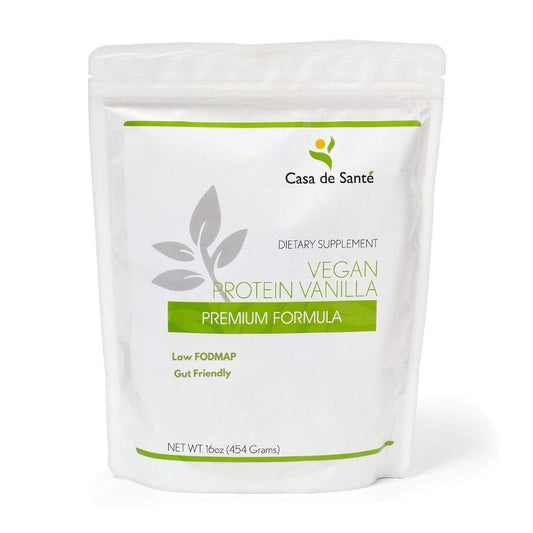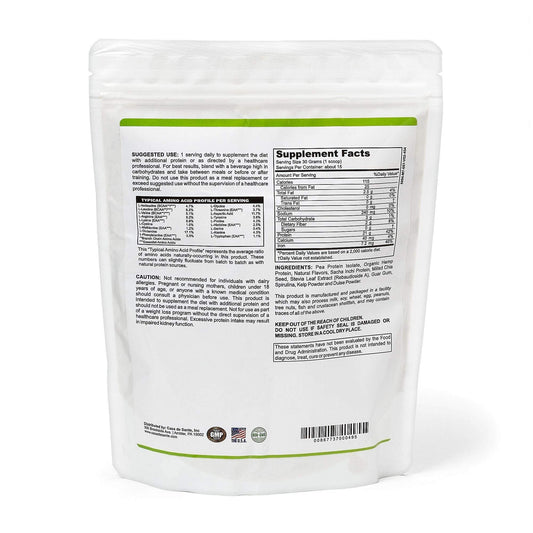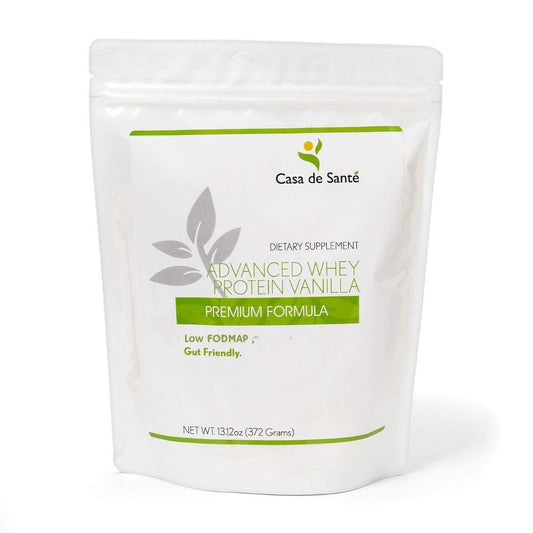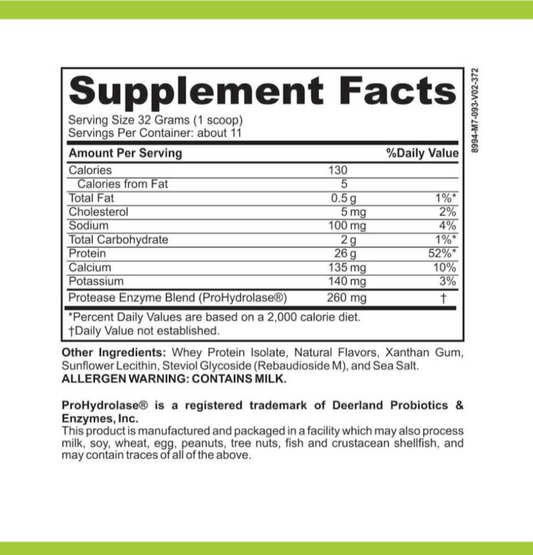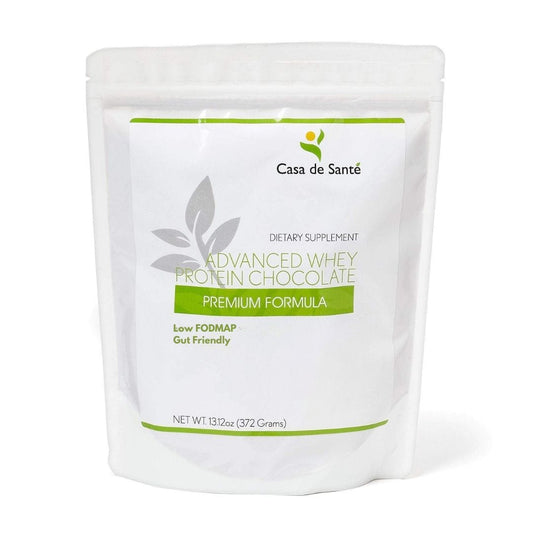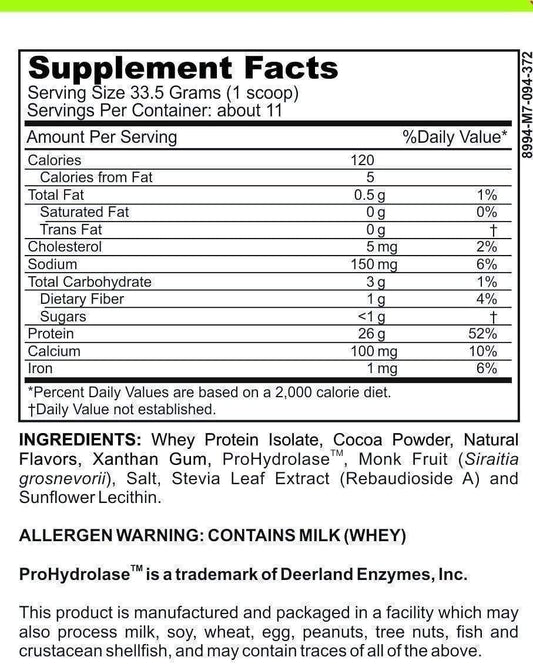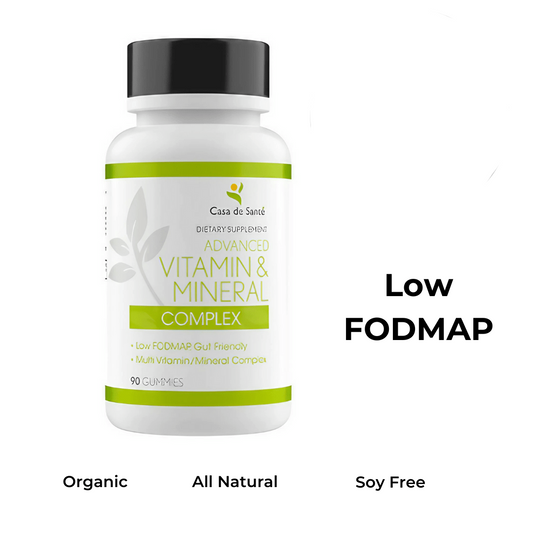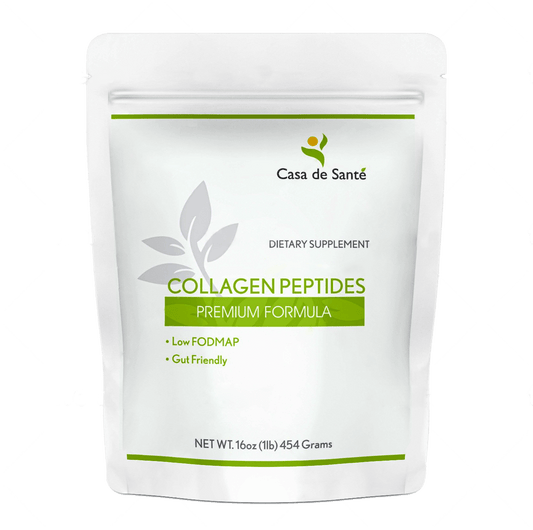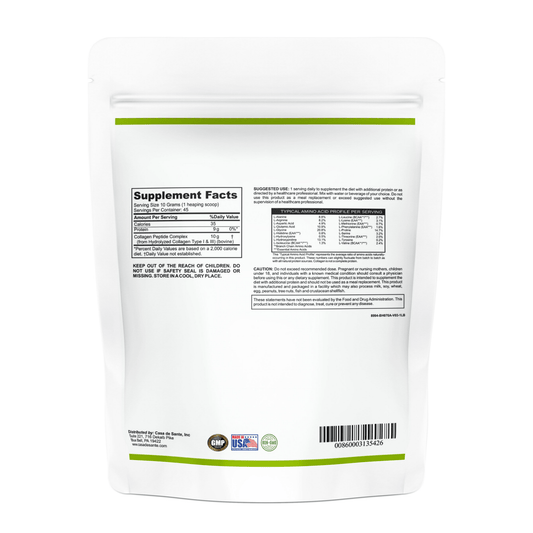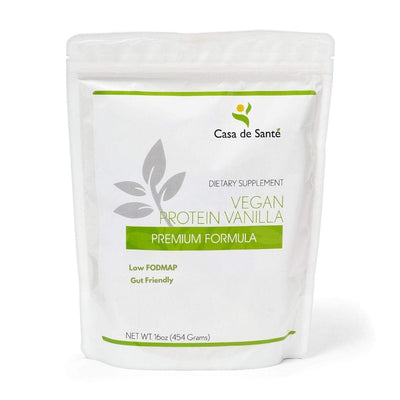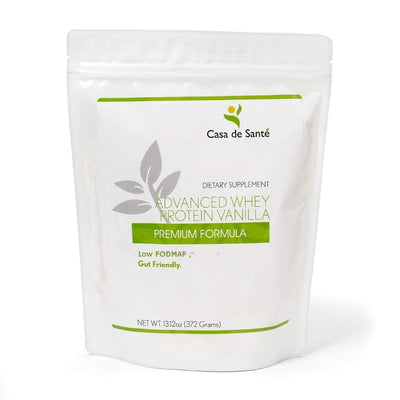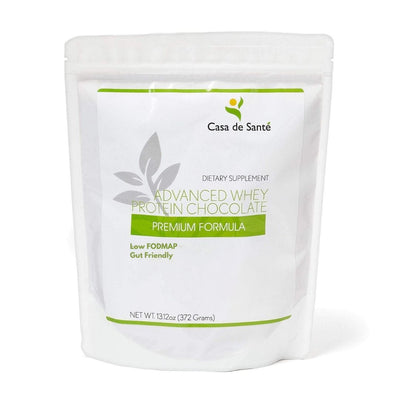Low FODMAP Banana Smoothie: A Digestive-Friendly Delight
Low FODMAP Banana Smoothie: A Digestive-Friendly Delight
If you're looking for a delicious and gut-friendly option to start your day or satisfy hunger between meals, a low FODMAP banana smoothie is a great choice. Low FODMAP diets aim to reduce the intake of fermentable carbohydrates which can cause digestive issues for individuals with irritable bowel syndrome (IBS) and related conditions. By incorporating ingredients that are easy on your digestive system, this nutritious smoothie can help maintain your comfort and well-being.
Using a combination of low-FODMAP fruits and safe ingredients, you can enjoy a refreshing and healthy banana smoothie without triggering any IBS symptoms. Bananas are an excellent source of fiber, vitamins, and minerals, while low-FODMAP milk options like almond milk or lactose-free milk ensure your smoothie is lactose-free and IBS-friendly.
It's easy to customize your low-FODMAP banana smoothie with additions like unsweetened cocoa powder, peanut butter, or even cold-brewed coffee for a mocha twist. With a focus on appropriate portion sizes and careful selection of ingredients, you can create an array of delicious and nourishing low-FODMAP smoothies that will satisfy your cravings and support your digestive health.
Understanding Low FODMAP
What is Low FODMAP
Low FODMAP is a diet specifically designed for people with irritable bowel syndrome (IBS). FODMAP stands for Fermentable Oligosaccharides, Disaccharides, Monosaccharides, and Polyols. These are specific types of carbohydrates that are difficult for your gut to absorb and may cause IBS symptoms such as gas, bloating, and diarrhea.
The Low FODMAP diet involves limiting the intake of high FODMAP foods and replacing them with low FODMAP alternatives. The aim is to help you identify and manage the specific foods that trigger your IBS symptoms, promoting better digestive health. The diet was developed by researchers at Monash University and has proven to be an effective way to manage IBS.
Low FODMAP and IBS
IBS is a common condition that affects the digestive system, causing symptoms like abdominal pain, bloating, and changes in bowel habits. A low FODMAP diet can help improve these symptoms by reducing the consumption of foods that are known to trigger IBS issues.
The low FODMAP diet is typically implemented in three stages:
- Elimination: You eliminate all high FODMAP foods from your diet for a certain period, usually 4-6 weeks.
- Reintroduction: Gradually reintroduce specific high FODMAP food groups one at a time and monitor your symptoms to identify which foods cause problems for you.
- Personalization: Once you have identified the specific food triggers, adjust your diet to include as much variety as possible while still avoiding or limiting the problematic foods.
When following a low FODMAP diet, it is important to remember that the goal is to discover your personal food triggers rather than completely avoiding all high FODMAP foods indefinitely. This approach can help you achieve better digestive health while still enjoying a diverse and balanced diet. Keep in mind that everyone's triggers are different, so it is essential to tailor the low FODMAP diet specifically to your unique needs and preferences.
Banana in a Low FODMAP Diet
Bananas can be a part of your low FODMAP diet, but it is essential to choose the right type and serving size. A low FODMAP diet typically restricts foods high in fermentable oligosaccharides, disaccharides, monosaccharides, and polyols (FODMAPs) to help manage symptoms of irritable bowel syndrome (IBS).
In the case of bananas, unripe or green bananas are higher in FODMAPs, while ripe bananas are generally low FODMAP. When incorporating bananas into your low FODMAP diet, you should be cautious with the portions. A safe serving size is approximately one-third of a medium-sized ripe banana. Consuming more than this may cause symptoms in some individuals.
When making a low FODMAP banana smoothie, consider the following key points:
- Use ripe bananas, and limit the portion to one-third of a medium-sized banana.
- Combine your banana with a low FODMAP milk alternative, such as almond milk, rice milk, or hemp milk.
- Avoid using high FODMAP fruits, vegetables, or additives in your smoothie.
- Be aware of FODMAP stacking, which occurs when multiple low FODMAP ingredients are combined, potentially causing an overall high FODMAP item.
By considering these tips, you can enjoy a delicious and nutritious low FODMAP banana smoothie that fits within your dietary restrictions. Remember to always consult a registered dietitian or nutrition professional for personalized advice and guidance when following a low FODMAP diet.
Ingredient Selection for Low FODMAP Banana Smoothies
FODMAP Friendly Fruits
When selecting fruits for your low FODMAP banana smoothie, it's important to choose those with low FODMAP content. The best options are firm bananas, as overripe ones can have higher levels of sugars. To complement your banana base, you can add berries like strawberries, blueberries, raspberries, or cranberries, which have soluble fiber and antioxidants that help with IBS. In addition, you can include small portions of orange or pineapple, and melons like cantaloupe and honeydew, as long as you avoid FODMAP stacking.
Non-Dairy Milk Choices
To keep your smoothie low FODMAP, opt for non-dairy milk alternatives like almond milk, rice milk, or lactose-free milk. Almond milk is a great vegan choice, whereas lactose-free milk offers the rich taste of regular milk without the lactose that can cause IBS symptoms. It's essential to choose unsweetened versions of these milks to limit sugar content.
Sweetening your Smoothie
Sweetening your low FODMAP banana smoothie can be achieved with lower FODMAP options such as maple syrup or pure stevia. These alternatives provide a sweet taste without contributing to digestive discomfort that can be caused by artificial sweeteners and high FODMAP sugars.
Adding Extra Nutrition
To boost the nutritional content of your low FODMAP banana smoothie, consider adding grounded flax seeds, chia seeds, or rolled oats for additional fiber and healthy benefits. Spinach or kale can also be introduced in smaller amounts for extra vitamins and minerals. For protein, add peanut butter, Greek yogurt, or consider incorporating a low FODMAP protein powder. Finally, if you're craving a chocolaty addition, use a tablespoon of natural or Dutch-processed cocoa powder for a satisfying mocha twist.
The Basic Low FODMAP Banana Smoothie Recipe
Preparing a delicious and healthy low FODMAP banana smoothie is a breeze. Follow this simple recipe to enjoy a tasty treat that suits your dietary needs:
-Ingredients:
-
1/2 cup (120 ml) unsweetened almond, hemp, or rice milk
-
1/2 cup (120 ml) very strong brewed coffee, cold
-
1/3 frozen very ripe medium-sized banana, cut into chunks
-
1 tablespoon natural or Dutch-processed cocoa powder
-
A pinch of sugar (optional)
-
A few ice cubes (optional)
-
Instructions:
-
First, gather all your ingredients for the smoothie, and ensure they are all low FODMAP, such as almond milk or lactose-free milk.
-
To ensure a smooth texture, it's best to use a high-quality blender. Before starting, ensure your blender is clean and properly functioning.
-
Begin by adding the milk of your choice into the blender, followed by the cold, strong brewed coffee to give your smoothie a rich, bold flavor.
-
Next, add the frozen banana chunks to the mix. A frozen banana not only contributes to a creamy texture, but it also adds natural sweetness to your smoothie, reducing the need for added sugars.
-
Add a tablespoon of cocoa powder for a chocolaty note, and if desired, a pinch of sugar to enhance the overall taste of your smoothie.
-
If you prefer a thicker and colder consistency, toss in a few ice cubes before blending, although this step is optional.
-
Finally, blend the mixture until it reaches your desired consistency. Pour the smoothie into a glass and serve immediately.
Enjoy your healthy and delicious low FODMAP banana smoothie, perfect for a refreshing snack or breakfast on-the-go!
Enhancing Your Banana Smoothie
A low-FODMAP banana smoothie can be a delicious and nutritious way to start your day or provide an energy booster in between meals. To enhance the flavor and nutritional content of your banana smoothie, consider incorporating these additional ingredients:
Protein: Adding protein to your smoothie can help keep you fuller for longer periods and support muscle growth. Consider using a low-FODMAP protein powder or incorporating a nut butter, such as peanut or almond butter, to increase protein content and provide a creamier texture.
Spinach: Spinach is a fantastic source of iron and other essential nutrients, plus it's low-FODMAP. Adding a handful of spinach to your banana smoothie won't alter the taste much, but it will give your smoothie a vibrant green color and boost your nutrient intake.
Berries: Berries, such as blueberries, strawberries, and raspberries, can add vibrant colors and flavors to your smoothie. These fruits are also low in FODMAPs and packed with antioxidants, making them a healthy addition to your banana smoothie. Make sure to stick to the recommended serving sizes to manage your FODMAP intake.
Cocoa: For a rich, chocolatey flavor, consider adding a tablespoon of natural cocoa powder to your banana smoothie. It will not only provide a tasty twist, but it also offers some potential health benefits thanks to its antioxidant properties.
Ginger: Adding ginger to your smoothie can provide a zesty kick and may have digestive benefits. You can use a small piece of fresh ginger or a teaspoon of ginger powder to up the flavor and potentially help soothe your intestinal tract.
Fibre: To increase the fiber content, consider adding ground flaxseeds or chia seeds to your banana smoothie. These seeds are low-FODMAP and can provide a smooth and filling texture to your drink without overpowering the taste.
Cinnamon: Sprinkling a dash of cinnamon into your banana smoothie can add a delicate warmth and additional flavor to complement the banana. Cinnamon has been linked to some potential health benefits, such as helping to regulate blood sugar levels and improve digestion.
Now that you've learned how to enhance your low-FODMAP banana smoothie, feel free to experiment with different combinations to find your perfect blend. Keep in mind to stay within recommended low-FODMAP serving sizes to minimize potential digestive issues. Enjoy crafting your delicious, personalized banana smoothie!
Potential Health Benefits of Low FODMAP Banana Smoothies
Boosting Digestive Health
Low FODMAP banana smoothies can be a great option for people with sensitive digestive systems, such as those with irritable bowel syndrome (IBS), due to their ingredients being easily digestible and gentle on the gut. Bananas, for example, provide a good source of potassium and carbohydrates without causing excessive gas or bloating. Adding a scoop of low FODMAP protein powder or flaxseed to your smoothie can further enhance its nutritional value, providing you with essential nutrients while maintaining a healthy balance of gut bacteria.
Promoting Cardiovascular Health
Incorporating low FODMAP banana smoothies into your diet can also help support cardiovascular health. Bananas are rich in potassium, an essential mineral that helps regulate blood pressure and reduce the risk of heart disease. Additionally, the inclusion of flaxseed can provide your body with a good source of omega-3 fatty acids, which are known to be beneficial for maintaining healthy cholesterol levels. Pairing your banana smoothie with other heart-healthy ingredients such as blueberries or cocoa, which are rich in antioxidant flavanols, can further provide additional benefits for your heart and overall health.
Building Healthy Eating Habits
Opting for a low FODMAP banana smoothie for breakfast, snack, or even dessert is an excellent way to maintain a balanced and nutritious diet. This versatile option can help ensure that you're getting a good mix of essential nutrients, vitamins, and minerals throughout the day. By choosing ingredients like protein powder, fresh fruits, and flaxseed, you'll be providing your body with a nutrient-dense meal that's low in unhealthy fats and refined sugars. In doing so, you can establish healthier eating habits that not only benefit your digestive system but also contribute to your long-term well-being.
Common Questions About Low FODMAP Smoothies
Can I have a Smoothie for Lunch?
Yes, you can have a low FODMAP smoothie for lunch. It's a convenient and delicious way to get essential nutrients in your diet. Just make sure to use low FODMAP fruits, vegetables, and milk alternatives, like almond milk, lactose-free milk, or coconut milk. You can also add protein sources like:
- Egg White Protein Powder
- Organic Rice Protein Powder
- Whey Protein Powder (lactose-free)
Is it Possible to Stack FODMAPs?
FODMAP stacking is when you consume different low FODMAP foods in a single meal, and the combined FODMAP content may cause symptoms. When making a smoothie, be mindful of the portions of each ingredient, as they may be classified as low FODMAP individually but could cause symptoms when combined. Stick to the recommended serving sizes of fruits and vegetables to avoid FODMAP stacking.
Are Green Smoothies Low FODMAP?
Green smoothies can be low FODMAP if you use suitable ingredients. Many leafy greens, such as spinach or kale, are low FODMAP and can be included in a smoothie. Be cautious with your fruit choices and avoid using high FODMAP ingredients in your green smoothie. When using low FODMAP fruits like:
- 1/2 banana
- 10 strawberries
- 20 blueberries
- 10 raspberries
Combine these fruits with your leafy greens and low FODMAP milk alternatives to create a nutritious and delicious green smoothie.
Can Smoothies be Used for Weight Loss?
Smoothies can be a part of a weight loss plan when consumed mindfully. Low FODMAP smoothies made with nutrient-rich fruits and vegetables, as well as protein sources, can provide essential nutrients without causing digestive symptoms. To aid in weight loss, it's important to control portion sizes and choose low-calorie ingredients while still providing all the necessary vitamins and minerals. Make sure to consult with a dietitian or a healthcare professional before starting any weight loss plan.
Final Thoughts on Low FODMAP Banana Smoothies
Creating a Daily Smoothie Habit
Low FODMAP banana smoothies can be a delicious and nutritious option for those following a low FODMAP diet. Incorporating these smoothies into your daily routine can provide you with a tasty way to incorporate more fruit, like bananas, into your breakfast or snack time. Keep in mind that unripe bananas without brown spots are low FODMAP, whereas ripe bananas with brown spots are considered high FODMAP due to the presence of fructans.
By creating a habit of making and enjoying low FODMAP banana smoothies, you can benefit from the nutrients and energy that they provide. Additionally, this may encourage you to try other low FODMAP fruit and vegetable options to mix things up and further benefit your digestive health.
Being Creative with Your Smoothies
While starting with a simple low FODMAP banana smoothie recipe is a great idea, don't be afraid to get creative with your ingredients. Try adding other low FODMAP fruits, such as strawberries, blueberries, or raspberries to your smoothie for more vibrant flavors. You can also experiment with different low FODMAP milk alternatives, like almond, lactose-free, or coconut milk. This can help you tailor your smoothies to your personal tastes and preferences, as well as introduce variation into your diet.
In conclusion, low FODMAP banana smoothies are not only a delicious treat but also a beneficial addition to your daily routine. By making a habit of including these smoothies in your diet and exploring different ingredient options, you can support your digestive health and enjoy a satisfying, nutritious drink.

